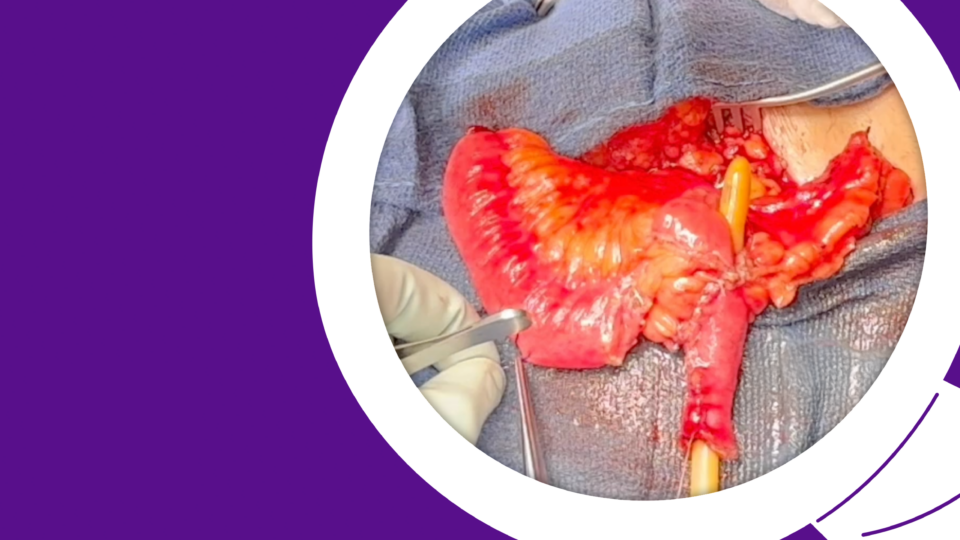Pelvic organ prolapse is common, affecting up to 50 percent of women over their lifetime. Although treatment can be straightforward, in a recent article in Case Reports in Urology, urogynecologist Benjamin M. Brucker, MD, and colleagues at NYU Langone Health share three patient cases to draw attention to the distinctive care needs of individuals with pelvic organ prolapse in the setting of Ehlers-Danlos syndrome (EDS).
A rare hereditary disorder, EDS impacts connective tissue and collagen synthesis. The condition not only predisposes patients to gynecologic and obstetric complications like pelvic organ prolapse but also increases the risk of surgery, which is often required for symptom relief.
“There’s very little in the published literature about the nuanced care required for proper management of pelvic organ prolapse in patients with EDS,” says Dr. Brucker, director of the Center for Urogynecology and Reconstructive Pelvic Surgery.
“There’s very little in the published literature about the nuanced care required for proper management of pelvic organ prolapse in patients with EDS.”
Benjamin M. Brucker, MD
Safe and effective management of prolapse in this group requires a care team with diverse expertise and a deep understanding of patient expectations for treatment, he adds.
Benefiting from Multiple Specialties
Conservative symptom management is often the first line of treatment for pelvic organ prolapse. Rheumatologists and physiatrists offer treatments that aim to alleviate pain or discomfort or strengthen and stabilize pelvic floor muscles and connective tissue.
If nonsurgical methods do not deliver the desired outcomes, reconstructive surgery is an option. Yet while surgery is associated with high success rates, Dr. Brucker emphasizes caution for patients with EDS.
“Surgical planning for pelvic organ prolapse in individuals with hereditary connective tissue disorders requires additional care because of tissue characteristics, concomitant conditions, and perioperative risk such as propensity to bleed,” says Dr. Brucker.
“Surgical planning requires additional care because of tissue characteristics, concomitant conditions, and perioperative risk such as propensity to bleed.”
In the recent report, he and co-authors describe the distinct challenges tissue characteristics pose for surgeons and stress the importance of gentle perioperative and postoperative techniques that avoid cutaneous complications and minimize dressing changes to protect healing tissue.
The potential for worsening dysautonomia, hemodynamic instability, trachea collapse, or spontaneous pneumothorax during anesthesia administration also requires extra caution.
In addition, postoperative gastrointestinal complications are more common for these individuals, making collaboration with gastroenterology key.
Younger Patients and Family Planning
Although pelvic organ prolapse is often associated with aging, women with EDS and other connective tissue disorders tend to develop prolapse as early as their late 20s, says Dr. Brucker, without experiencing the known risk factors of pregnancy or menopause.
Prolapse symptoms have a more dramatic negative impact on the quality of life for younger women with EDS, he adds.
“Younger women may have different treatment goals and considerations that need to be considered,” says Dr. Brucker. “When discussing surgical options for younger patients with pelvic organ prolapse and EDS, it’s important to discuss family planning and future pregnancy.”
“Younger women may have different treatment goals and considerations that need to be considered.”
The authors describe the case of a 19-year-old female with EDS for which conservative management and physical therapy did not resolve a persistent vaginal bulge secondary to prolapse. The patient wished to pursue a surgical option.
After considering the pros and cons of robotic uterosacral ligament suspension and sacrohysteropexy, the patient agreed to surgery, confirming no interest in future pregnancy. Following the successful surgery, abdominal pain in recovery required consultation with general surgery, and she reported notable improvement in vaginal bulge and pelvic pain at a follow-up six months later.
Comprehensive, Quality Care
Other cases in the report include those of two women, aged 38 and 52, with EDS, pelvic organ prolapse, and urinary incontinence. Robotic-assisted surgeries, including hysterectomy and sacrocolpopexy, successfully resolved their symptoms.
Notably, collaboration with gastroenterology elevated the quality of care delivered to the 38-year-old patient.
“Because she was multiparous and had defecatory problems, the urogynecology team involved other specialties to determine if rectal repair was necessary,” says Dr. Brucker. “It wasn’t, but because we had early input from gastrointestinal and colorectal surgery colleagues, there was already postoperative support in place.”
“While the underlying pathology may be similar, no two individuals with pelvic organ prolapse and EDS are alike,” stresses Dr. Brucker. “We believe that collaboration with our colleagues in other specialties delivers the best outcome for each patient.






